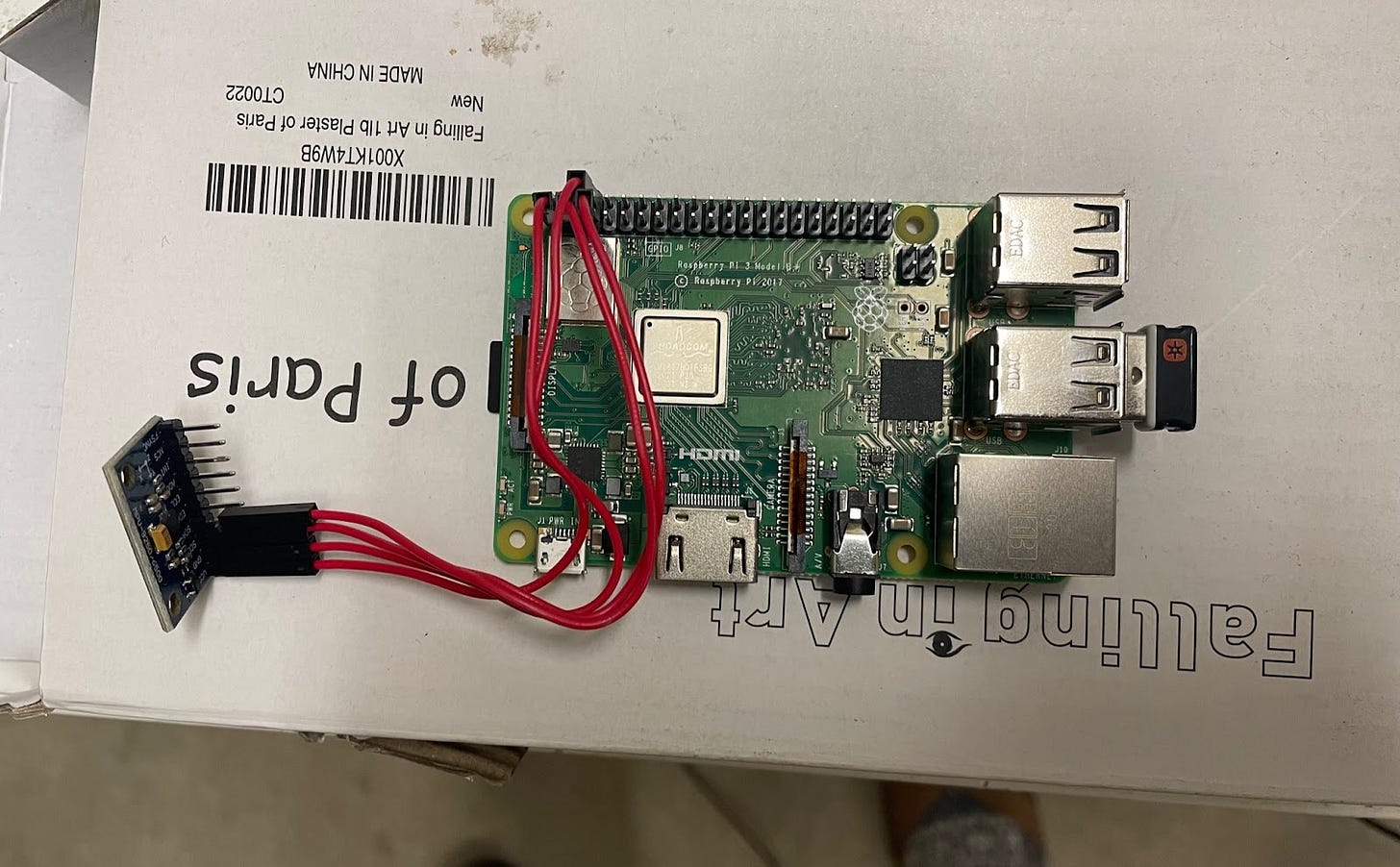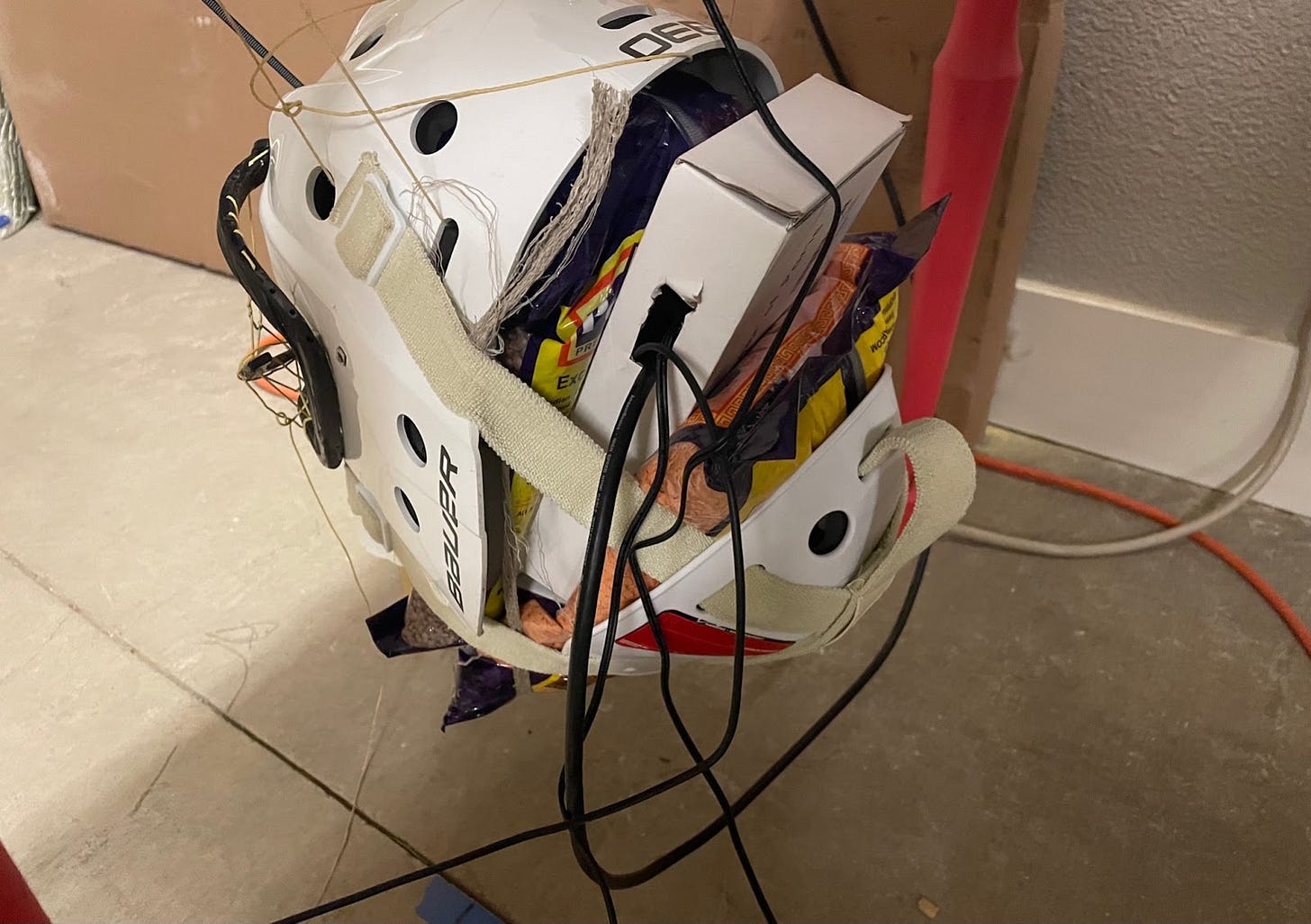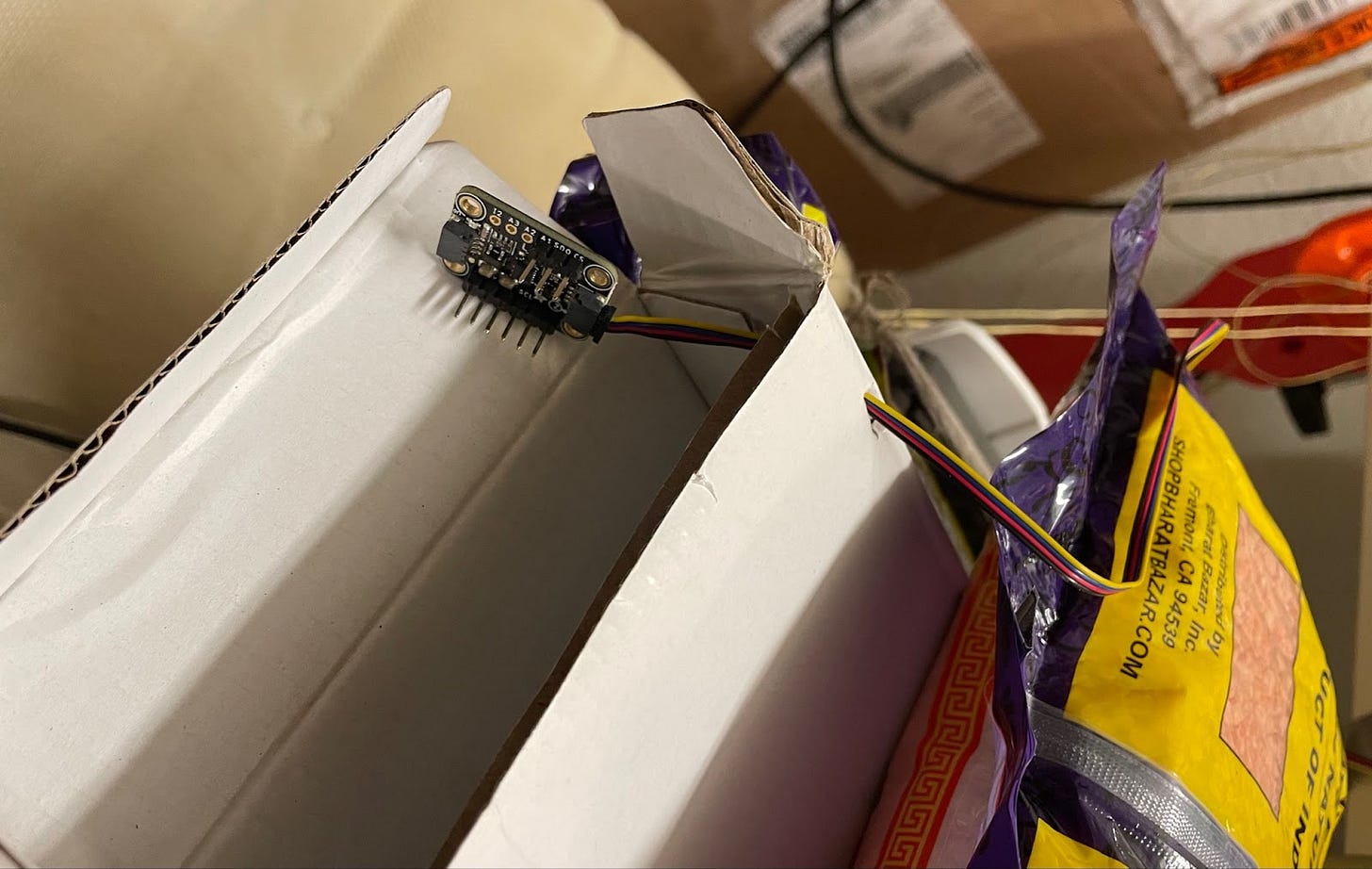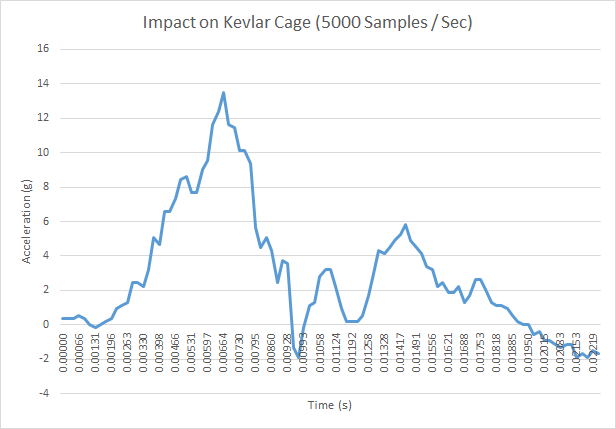An Inventor's Quest for the NHL Pt. 12
Some Relief at Last
This series follows my attempt to develop a product that I dream of getting into the NHL. Previously on the Quest: Part 1, Part 2, Part 3, Part 4, Part 5, Part 6, Part 7, Part 8, Part 9, Part 10, Part 11
Hello friends,
I learned two things this past week. First, that my cage isn’t actually any worse for concussions than a metal cage. And second, that I don’t enjoy wiring / software-related projects. The things you can achieve with electricity are impressive, but my God is it a pain to achieve them.
I left the comfort of my preferred, Stone Age era engineering in an attempt to improve the fidelity of the head acceleration data I’ve been collecting. Previously I’d used an app on my phone to capture data at 100 samples / second to understand the concussion risk. But since the impact happened so quickly, the results were very peaky and I wasn’t sure if I could trust them. There was a good chance I wasn’t capturing the true maximum acceleration.
So I had to use a better sensor. I followed this tutorial to hook up an accelerometer, which gave me 1000 samples / second, to a Raspberry Pi, which I learned is basically like a minimal computer.
I made the wires way too short, so I had to stick the sensor as well as the whole Raspberry Pi in a box to put in my helmet.
No laughing please. Thank you.
The results were very positive. For my cage, the average acceleration was 2.73 g. For the metal cage, the average acceleration was 4.64 g.
But I still wasn’t 100% sure. Look at the peakiness of the line when I zoom in on a single impact.
So I got another accelerometer. This one was supposed to be able to give me 10,000 samples / second, but the provided code had a ton of errors. I spent a full day trying to fix things – Googling errors and asking the sensor what it wanted. But I had no luck. At best, the sensor was randomly reading 16 g while it was sitting still. I think maybe the sensor itself was faulty but I had no idea how to check that.
So I got a third accelerometer. This one was supposed to give me 5,000 samples / second and, eventually, it did. This one also had issues, but this time, Google came through. I had a longer wire too, so I could just put the accelerometer itself in the box.
Results were much higher this time around, but still positive. After 25 impacts, the average peak acceleration for my cage was 10.29 g while it was 11.72 g for the metal cage. And the data from a single impact looked much more complete.
All in all, after these latest rounds of tests, I’m convinced that my design is as good – if not better – than the metal cage for concussions. That’s a huge relief.
To everyone who told me that I shouldn’t be worried about this when I started worrying about it a month ago, feel free to say “I told you so” at your screens now.
Do I think I wasted a month? No, not really. From working in aerospace, I learned that you want engineers who are a bit paranoid and nervous about their own designs. Overconfidence leads to assumptions and errors. I was definitely a bit paranoid about the concussion risk in this cage.
Theoretically, it made zero sense from the beginning that the metal cage would somehow be absorbing energy, but I couldn’t discount what I saw with the bounciness of my cage (which I thought was an indicator of how little energy was being dissipated in the collision).
With this acceleration data – a much more direct measure of the concussion risk – I can now ignore the bounciness as just another one of the many mysteries of the universe that I won’t fully understand.1
Thanks as always for reading,
Surjan
My working theory is that my experiment was flawed. If you look at the gifs in Part 11, the helmet with the metal cage was moving a lot more after impact. So the energy might have gone into moving the helmet more. I could probably spend a bunch of time trying to make a better experiment, but I have no reason to try anymore.






